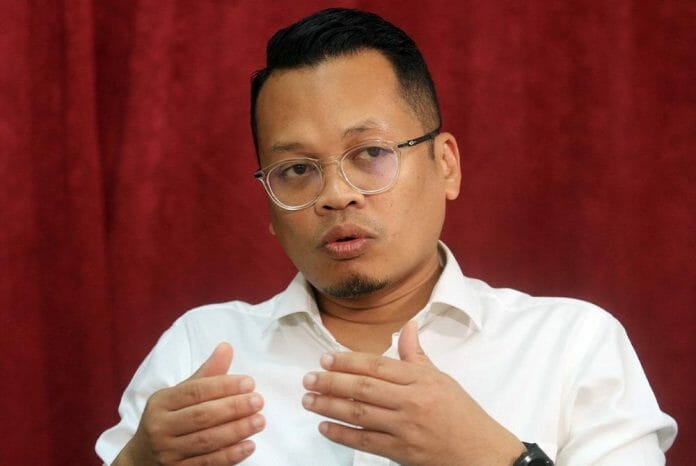In a dialogue session with the Minister of Natural Resources, Environment, and Climate Change Nik Azmin said the transition to reach the Government’s 70% RE capacity mix target by 2050 is expected to involve a massive investment of RM637b based on estimates by the International Renewable Energy Agency (IRENA) and the Ministry.
This will involve investments into new RE generation sources, strengthening of grid infrastructure, storage system integration, and grid system augmentation. Malaysia’s RE resource leans heavily towards solar, which is intermittent in nature, hence energy storage systems (ESS) is expected to play a crucial role in enabling more solar adoption. At this juncture, ESS cost is still expensive, and this was not helped by Malaysia’s low and subsidised electricity tariffs previously which makes costly ESS integration unattractive. In comparison, Singapore entails much higher market-driven tariffs, hence it sees Singapore as a more viable market to export Malaysia’s solar+ESS capacity in which the returns can then be reinvested to scale up domestic RE and ESS.
The Minister said he recognises that Tenaga faces ESG challenges given coal dominance in its business (which to be fair, is a result of Government policy to diversify from gas-centric power generation in the distant past). However, NRECC also recognises that Tenaga is working hard to grow its RE capacity, highlighting Tenaga’s RE asset acquisitions in the UK and current bids in the RE sector in Australia. One of the aspects that the Minister highlighted was the fact that these overseas ventures give Tenaga the exposure to market-based environment, as can also be seen in power markets in which YTL Power (via YTL Power Seraya in Singapore) is operating in.
Is nuclear on the table? The straight answer is no. It was learnt that at this point, the Government is keeping its stance on nuclear. Research facilities related to this is no longer operational and the Minister sees more need to convince the public on nuclear-based power generation.
What about hydro? NRECC does not see large hydro as a sustainable long-term solution in the transition – for Peninsular Malaysia, at least – given its environmental impact, but is more inclined towards small and micro-scale hydro. Nevertheless, it does not intend to intervene with large hydro projects that are already approved.
On carbon tax. The Ministry of Finance is taking the lead on studies on carbon tax. While carbon tax implementation may not materialise in the near-term – as NRECC believes it needs to undergo proper and comprehensive analysis prior to rollout to avoid backlash – NRECC believes carbon tax introduction is inevitable in the long run as the Government needs to send the right signals to the market in regard to carbon emission.
TPA in the works. The Government sees Third Party Access (TPA) to the grid as potential game changer to grow direct PPAs between RE developers and offtakers. NRECC believes the higher rate for GETs (Green Energy Tariffs) announced recently will benefit RE developers. However, for LSS developers, we understand that the environmental attributes are surrendered to Tenaga hence we believe the benefits from higher GETs tariff might only be beneficial to those developers involved in RE programs other than LSS.
Mechanism for RE export. The Energy Commission is working on a mechanism for an energy exchange which will enable cross border RE trade, where essentially, all the RE which is to be exported will be traded via this exchange. We reckon this could essentially take the shape a wholesale market for RE exports determined by market rates. NRECC believes there is a ‘sweet spot’ for RE export from Peninsular Malaysia to Singapore, priced higher than domestic tariffs but lower than competing export bids from Cambodia, Sarawak and Australia. Peninsular Malaysia Quick Thoughts Friday, July 21, 2023 2 also benefits from geographical proximity to Singapore with an existing interconnection in Johor, which significantly lowers grid connection costs relative to competitors, in our opinion.
Looking at rooftop solar as one of key driver of RE ambition. NRECC believes there is yet a lot of rooftop solar potential that can be unlocked. It may consider incentives for rooftop solar installation, particularly to encourage adoption for lower income households. Additionally, NRECC recently relaxed conditions on NEM (Net Energy Metering) and SELCO (Self-Consumption) programs by increasing allowable capacity to 85% of consumption from 75% previously, while also allowing participation of high voltage consumers in the SELCO program (previously, only allowed for low to medium voltage consumers in the non-domestic sector).
Impact of electricity subsidy rollback on EV owners. The Ministry said it acknowledges there will be impact on EV owners from the electricity subsidy rollback but highlights that current EVs available in the market are at higher price points implying that the impact is mainly on the higher income households rather than those in the lower income segment. It believes EVs will eventually be a game changer only once it reaches mass market price points of









